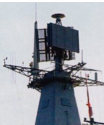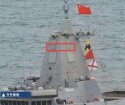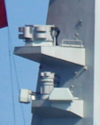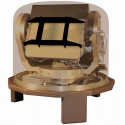The trend is definitely going in that direction, but first PLAN nneds to obtain how to utilize this type of asset through direct human control to gain experience and insight on how to manage this type of technology at sea.
PLAN will also require a vast modification to the carrier to obtain aircraft control center housing various monitors with data link to other surface ships CIC to create a new central control center.
That will associate with Blizo's response in terms of risk, cost and timeline.
Both US and NATO are doing R&D on this and may place it onto the field in the next 10 to 20 years but we will probably not see it within this decade.
Being able to network won't be much of an issue as the PLAN might have already planned for it and laid the infrastructure.
CEC would use a circular omnidirectional or four planar arrays.
Illustration shows the evolution of USN's CEC antennas, with USG-1, USG-2 and finally USG-3.
Take a look at the Shandong's mast.

You see this four arrays below the Type 382 radar. Similar arrays are on the Type 055's integrated mast, above its X-band AESA radar.

The mock up mast to test fittings for the 003 carrier holds even more of these panels.

I don't think modifications are needed. They are already planned in advance.
Liaoning's March 2019 refit added a set of flat panels on each side of the island, sandwiched between ESM and ECM. This would be on the third shelf going down. Previously there was an EW related unit installed there.

On the Type 075, you see this four trapezoidal arrays, two on each side of the mast attached to the shelf holding an ESM unit. The planar arrays themselves should be rectangular, the trapezoidal housing is to reduce RCS from side reflections. You are going to need something to talk to those rotary UAVs and helicopters with blisters on their bellies.

They are not going to need some vast modification. They already built it into it.






